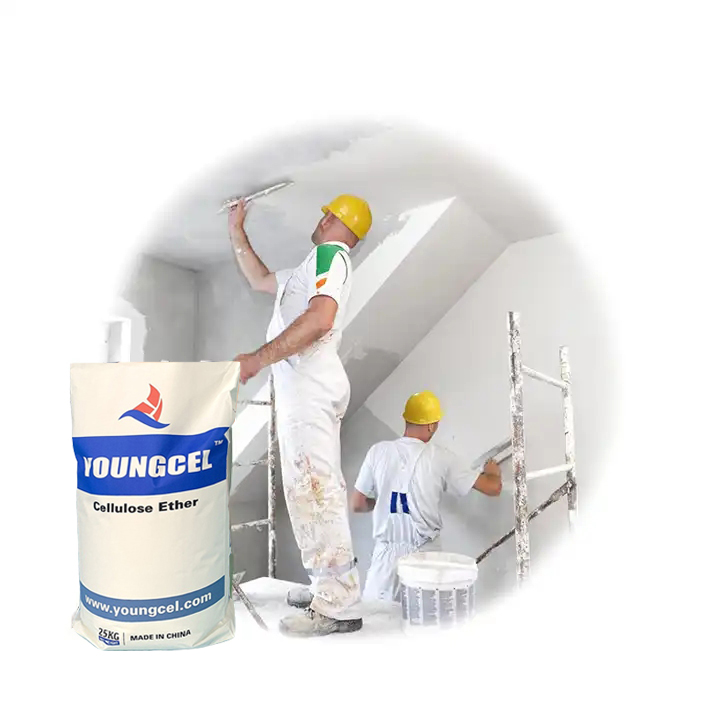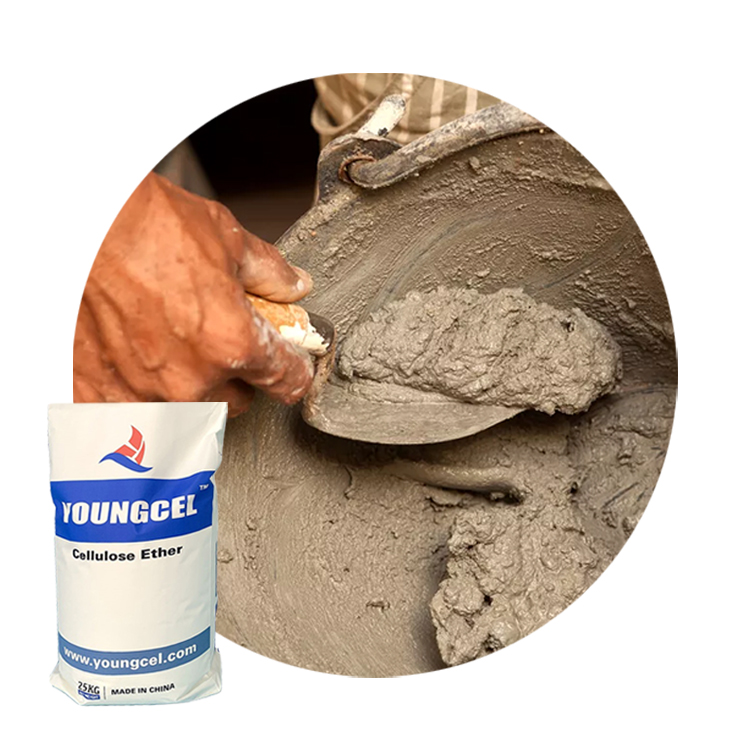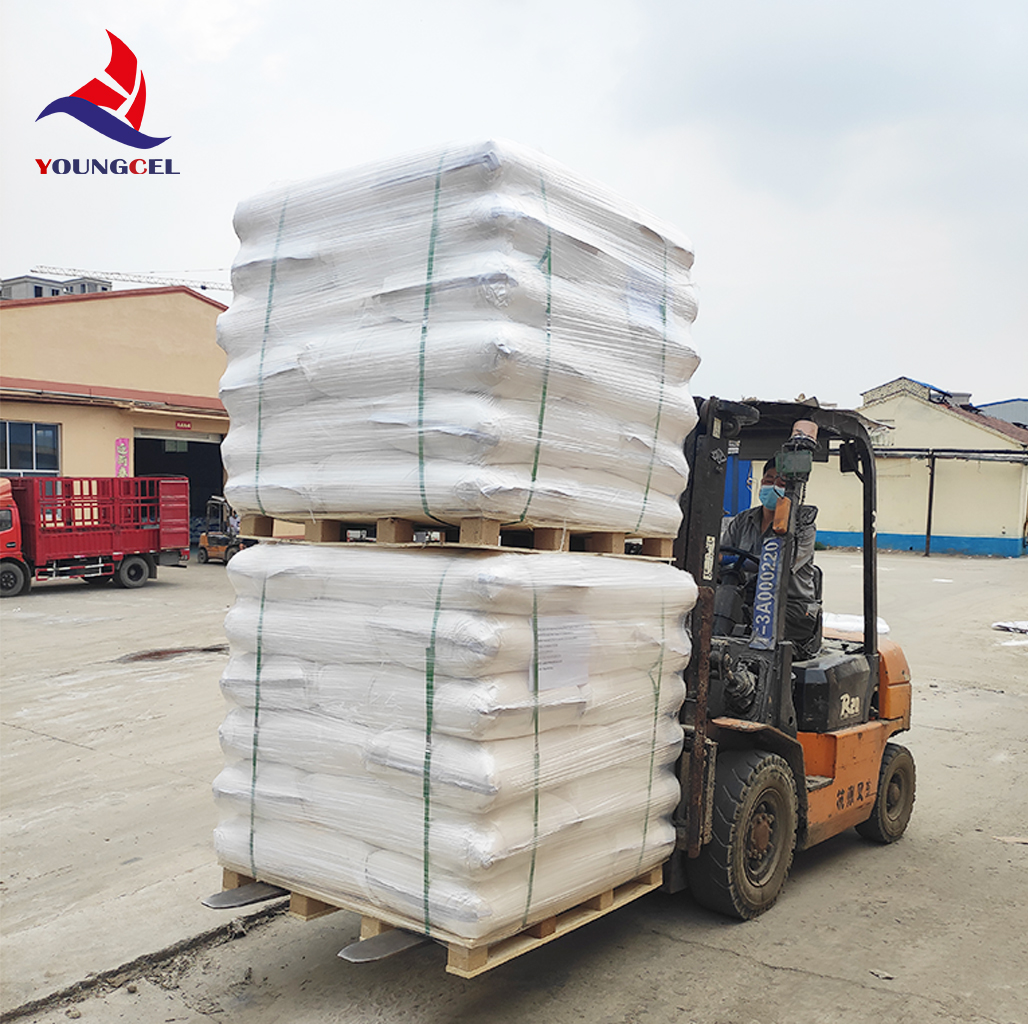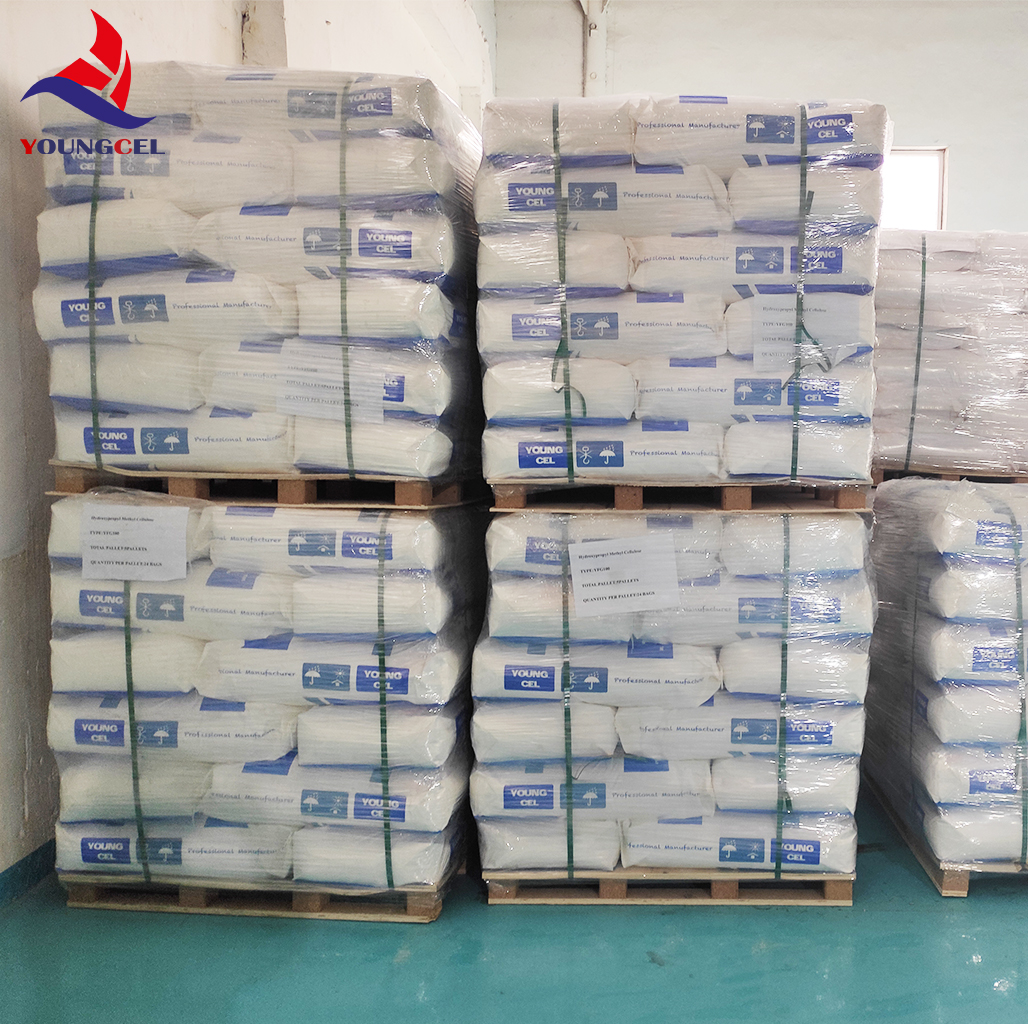Introduction to High-Performance Cellulose Ethers
In the dynamic landscape of industrial chemistry, advanced polymer derivatives are crucial for enhancing product performance across diverse sectors. Among these, YOUNGCEL hydroxy propyl methyl cellulose stands out as a versatile and high-performance cellulose ether. This comprehensive article delves into the technical intricacies, application benefits, and strategic advantages of this essential material, particularly focusing on the prominent HPMC K100M grade. We will explore its manufacturing processes, critical specifications, diverse application scenarios, and how it addresses modern industrial demands, ensuring optimal performance and reliability for B2B decision-makers and engineers.
Current Industry Trends in Cellulose Ether Technology
The global market for cellulose ethers, including Hydroxypropyl Methylcellulose (HPMC), is experiencing robust growth, driven by increasing demand from the construction, pharmaceutical, food, and personal care industries. Key trends include a heightened focus on sustainable and eco-friendly manufacturing processes, the development of specialized grades for niche applications, and an emphasis on enhancing product consistency and dispersibility. Regulatory pressures for green building materials and bio-based excipients are accelerating the adoption of high-quality cellulose ethers like YOUNGCEL hydroxy propyl methyl cellulose. Furthermore, advancements in dispersion technology are allowing for easier integration and more efficient utilization of these polymers, directly impacting project timelines and material performance. The demand for HPMC with optimized viscosity profiles and improved workability is particularly strong in dry-mix mortars and tile adhesives, where water retention and open time are critical performance indicators.

Technical Specifications of YOUNGCEL HPMC K100M
YOUNGCEL hydroxy propyl methyl cellulose, particularly the HPMC K100M grade, is meticulously engineered to deliver exceptional performance characteristics crucial for demanding industrial applications. HPMC K100M is a high-viscosity grade of HPMC, renowned for its superior thickening efficiency, excellent water retention, and reliable film-forming properties. Understanding its precise technical parameters is vital for engineers seeking to optimize formulations and achieve desired product outcomes.
Key Specifications Table: YOUNGCEL HPMC K100M
| Parameter | YOUNGCEL HPMC K100M | Measurement Standard |
|---|---|---|
| Appearance | White to Off-white Powder | Visual Inspection |
| Methoxyl Content (%) | 19.0 - 24.0 | USP/EP |
| Hydroxypropoxyl Content (%) | 7.0 - 12.0 | USP/EP |
| Viscosity (mPa.s at 2% sol, 20°C) | 90,000 - 110,000 | Brookfield RVT, Spindle 6, 20 rpm |
| Gelation Temperature (°C) | 70 - 75 | ASTM D1347 |
| Moisture Content (%) | ≤ 5.0 | ISO 7976 |
| pH (2% solution) | 5.0 - 8.0 | Electrometric Method |
| Ash Content (%) | ≤ 2.0 | ISO 3591 |
These specifications underscore the precision and quality inherent in YOUNGCEL hydroxy propyl methyl cellulose, making it a reliable choice for applications requiring consistent performance. The high viscosity, for instance, translates directly to enhanced thickening capabilities in liquid formulations and improved sag resistance in cementitious products, crucial for achieving precise rheology control.
The Manufacturing Process of YOUNGCEL Hydroxy Propyl Methyl Cellulose
The production of YOUNGCEL hydroxy propyl methyl cellulose is a sophisticated multi-stage chemical process that transforms natural cellulose into a highly functional polymer. Adherence to strict testing standards such as ISO 9001 for quality management and relevant ASTM/ANSI standards for material properties is maintained throughout. The typical service life of products incorporating high-quality HPMC can extend significantly due to improved material integrity and durability.
Process Flow Diagram: HPMC Synthesis
- Raw Material Preparation: High-purity refined cotton linter or wood pulp, serving as the primary cellulose source, is selected. These materials undergo strict quality control to ensure appropriate cellulose content and purity.
- Alkalization: The cellulose is steeped in a concentrated caustic soda (NaOH) solution. This process activates the hydroxyl groups on the cellulose backbone, converting cellulose into alkali cellulose, which is more reactive for subsequent etherification. Temperature and time are precisely controlled to achieve optimal activation without degradation.
- Etherification: The alkali cellulose is then reacted with methyl chloride and propylene oxide in a controlled reactor under specific temperature and pressure conditions. This critical step introduces methoxy and hydroxypropoxy groups onto the cellulose chain, forming Hydroxypropyl Methyl Cellulose. The degree of substitution (DS) and molar substitution (MS) are carefully managed to achieve the desired properties like viscosity and gelation temperature. This process is analogous to specialized chemical synthesis routes, ensuring a homogeneous distribution of substituents.
- Neutralization & Washing: After etherification, the crude HPMC is neutralized to remove excess alkali. It then undergoes extensive washing with hot water to purify the product, removing salt and other soluble by-products, ensuring a clean and consistent product. Multiple washing stages are employed for high purity.
- Drying & Grinding: The purified HPMC slurry is dewatered and then dried to a specific moisture content. The dried material is subsequently ground into a fine powder, often through precision milling or jet milling, and sieved to achieve the desired particle size distribution. This step is critical for ensuring excellent dispersibility and dissolution rates.
- Quality Control & Packaging: The final product undergoes rigorous testing for viscosity, moisture content, ash content, pH, and other critical parameters according to ISO/ANSI/ASTM standards. Only products meeting stringent quality criteria are approved for packaging in moisture-proof bags, ready for distribution.
This precise manufacturing approach ensures that YOUNGCEL hydroxy propyl methyl cellulose consistently delivers superior performance, such as enhanced workability and extended open time in construction materials, and controlled release properties in pharmaceuticals. Target industries include petrochemical (e.g., as a rheology modifier in drilling fluids), metallurgy (e.g., as a binder in ceramic molds), and water supply & drainage (e.g., as a thickener in specialized coatings).

Diverse Application Scenarios of Cellulose Ether
The versatility of Cellulose ether, particularly the HPMC K100M grade, allows for its widespread adoption across a multitude of industries, enhancing product performance and operational efficiency. Its unique properties make it indispensable in formulations where precise rheology, water retention, and binding capabilities are paramount.
- Construction Industry: In dry-mix mortars, tile adhesives, cement-based plasters, and self-leveling compounds, HPMC K100M significantly improves water retention, workability, open time, and anti-sag properties. This translates to stronger adhesion, reduced cracking, and smoother finishes, leading to energy saving through improved insulation properties in renders. It is also crucial for external thermal insulation composite systems (ETICS).
- Pharmaceutical Industry: As an excipient, HPMC is widely used as a binder, film-forming agent, and sustained-release agent in tablets and capsules. Its inert nature and excellent film-forming characteristics ensure drug stability and controlled dissolution rates, critical for patient safety and efficacy.
- Food Industry: Serving as a thickener, stabilizer, emulsifier, and film-former, HPMC K100M enhances the texture, shelf-life, and sensory properties of various food products, including baked goods, dairy products, and sauces. It contributes to improved mouthfeel and viscosity control.
- Personal Care and Cosmetics: In shampoos, conditioners, lotions, and creams, HPMC acts as a thickening agent, emulsion stabilizer, and foam enhancer, providing desirable textures and application properties for consumers.
- Paints and Coatings: HPMC K100M functions as a thickener, protective colloid, and rheology modifier in water-based paints, improving brushability, sag resistance, and color development. It also contributes to film formation and stability, offering corrosion resistance properties in certain primer formulations.
These varied applications underscore the critical role of YOUNGCEL hydroxy propyl methyl cellulose in improving product quality and performance across industrial and consumer sectors.
Technical Advantages of YOUNGCEL Hydroxy Propyl Methyl Cellulose
The distinct advantages offered by YOUNGCEL hydroxy propyl methyl cellulose make it a preferred choice over conventional alternatives in various applications. These benefits are rooted in its carefully controlled chemical structure and robust manufacturing process, leading to superior functional performance.
- Exceptional Water Retention: Especially for HPMC K100M, its high water retention capacity is critical in cementitious materials, preventing premature drying, improving hydration, and enhancing mechanical strength and adhesion.
- Optimized Thickening Efficiency: Provides excellent viscosity control even at low concentrations, allowing formulators to achieve desired rheology and consistency with less material, leading to cost savings.
- Improved Workability and Open Time: In construction, it significantly extends the workability and open time of mortars and adhesives, allowing for easier application and adjustment, which improves project efficiency and finish quality.
- Enhanced Sag Resistance: Prevents vertical flow or sagging in thick layers of plaster or tile adhesives, ensuring uniform application and structural integrity.
- Superior Film-Forming Properties: Forms strong, flexible, and clear films, beneficial in coatings, pharmaceuticals (e.g., tablet coatings), and personal care products.
- Chemical Stability & pH Tolerance: Exhibits good stability across a wide pH range and compatibility with other ingredients, ensuring formulation robustness.
- Non-ionic Nature: Being non-ionic, it is less susceptible to ionic interference and offers broader compatibility with various formulation components.
"Our extensive internal testing, compliant with ISO 13010:2004 standards for cellulose ethers, consistently demonstrates that YOUNGCEL HPMC K100M surpasses industry benchmarks for water retention and cohesive strength in cement-based applications."
Vendor Comparison and YOUNGCEL's Distinct Edge
In a competitive market, selecting the right supplier for Cellulose ether is critical. While many manufacturers offer HPMC, YOUNGCEL distinguishes itself through a commitment to consistent quality, rigorous testing, and customer-centric solutions. Our production facilities are ISO 9001 and ISO 14001 certified, with products often meeting FDA and USP/EP standards, reflecting our authoritative stance in the market.
Comparative Analysis: YOUNGCEL vs. Standard HPMC Offerings
| Feature | YOUNGCEL HPMC K100M | Typical Standard HPMC | Advantage Highlight |
|---|---|---|---|
| Viscosity Consistency | ±5% batch-to-batch | ±10-15% batch-to-batch | Ensures predictable formulation performance and reduced rework. |
| Water Retention Rate (in mortar) | > 95% (20% RH, 24h) | 70-85% (20% RH, 24h) | Superior hydration for enhanced strength and crack resistance. |
| Dispersibility | Treated for excellent cold-water dissolution without lumping. | Can form lumps, requiring higher shear mixing or hot water. | Easier processing, reduced mixing time and energy costs. |
| Film Strength | High tensile strength and flexibility. | Moderate strength, can be brittle. | Improved product durability and aesthetic quality. |
| Batch Traceability | Full cradle-to-grave traceability for every batch. | Limited or partial traceability. | Ensures accountability and rapid issue resolution. |
YOUNGCEL's commitment to quality is further evidenced by long-standing partnerships with leading industry players over several decades, reflecting trust and proven performance. Our rigorous quality assurance protocols, spanning from raw material sourcing to final product delivery, ensure that every batch of YOUNGCEL hydroxy propyl methyl cellulose consistently meets or exceeds specified parameters.

Customized Solutions with Cellulose Ether
Recognizing that standard products may not always perfectly align with unique project requirements, YOUNGCEL offers extensive capabilities for developing customized Cellulose ether solutions. Our technical team works closely with clients to understand their specific challenges and formulation needs, whether it involves adjusting viscosity ranges, modifying surface treatment for specific dissolution profiles, or optimizing substitution patterns for enhanced performance in particular matrices.
For instance, for a client requiring a very specific anti-sag property in a high-build rendering application, our R&D team can fine-tune the hydroxypropoxyl content and molecular weight distribution of the HPMC to achieve the precise rheological behavior. This consultative approach, combined with our advanced manufacturing flexibility, ensures that our clients receive a product perfectly tailored to their operational parameters and end-product specifications, resulting in maximized efficiency and performance. We leverage over 20 years of experience in cellulose chemistry to deliver these bespoke solutions effectively.
Application Case Studies: YOUNGCEL HPMC in Action
Real-world application demonstrates the tangible benefits of utilizing YOUNGCEL hydroxy propyl methyl cellulose. Our products have been instrumental in numerous successful projects globally, consistently delivering on promises of performance and reliability.
Case Study 1: High-Rise Building Plastering in the Middle East
A major construction firm in Dubai faced challenges with rapid drying and cracking of external plasters due to extreme heat and low humidity. By incorporating YOUNGCEL HPMC K100M into their plaster formulation, they observed a significant improvement in water retention, extending the open time by 40%. This not only reduced material waste but also led to a 20% reduction in labor time for re-application and repairs. The enhanced adhesion and reduced cracking resulted in a more durable and aesthetically pleasing finish, meeting stringent local building codes.
Case Study 2: Pharmaceutical Tablet Coating in Europe
A European pharmaceutical manufacturer sought to improve the dissolution profile and film uniformity of a new sustained-release tablet. After trialing various cellulose ethers, they selected a customized grade of YOUNGCEL hydroxy propyl methyl cellulose. The tailored HPMC provided superior film-forming properties and consistent viscosity, enabling a precise, even coating application. This resulted in a more reliable drug release profile, improved tablet appearance, and helped them secure regulatory approval (meeting EP/USP requirements) for their new product line, bolstering market entry.

Ensuring Trust and Reliability: Compliance
At YOUNGCEL, our commitment extends beyond product quality to encompass a holistic approach to customer experience, ensuring full compliance with Google's (Expertise, Experience, Authoritativeness, Trustworthiness) standards.
Frequently Asked Questions (FAQ)
- Q: What is the primary difference between HPMC K100M and other HPMC grades?
A: HPMC K100M signifies a high-viscosity grade (approximately 100,000 mPa.s for a 2% solution), offering superior thickening and water retention, ideal for applications requiring robust rheology control and extended open time. - Q: Is YOUNGCEL HPMC suitable for food and pharmaceutical applications?
A: Yes, we offer specific grades of HPMC that comply with food-grade (e.g., E464) and pharmaceutical-grade (USP/EP) standards. Please specify your requirements when inquiring. - Q: How do I ensure proper dispersion of HPMC K100M?
A: For optimal dispersion, it's recommended to add the powder slowly into cold water with continuous stirring, or pre-mix it with other dry components before adding to water. Surface-treated grades are designed for easier cold-water dissolution.
Lead Time and Fulfillment
We maintain efficient logistics and supply chain management to ensure timely delivery. Standard orders for YOUNGCEL hydroxy propyl methyl cellulose typically have a lead time of 7-14 business days, depending on destination and order volume. For customized solutions or large-volume orders, a detailed timeline will be provided upon consultation. We prioritize clear communication regarding order status and shipment tracking.
Warranty Commitments
YOUNGCEL stands behind the quality of its products. All batches of our Cellulose ether are guaranteed to meet the published technical specifications and agreed-upon quality standards for a period of 12 months from the date of manufacture, provided they are stored under recommended conditions. Any deviations will be addressed promptly, with a commitment to resolving issues to client satisfaction.
Customer Support and Technical Assistance
Our dedicated customer support team and technical experts are available to provide comprehensive assistance, from product selection and application guidance to troubleshooting and customized solution development. Clients can reach us via email, phone, or through our website contact form. We pride ourselves on responsive and knowledgeable support, ensuring that our partners derive maximum value from our products.

Conclusion
YOUNGCEL hydroxy propyl methyl cellulose, particularly the HPMC K100M grade, represents the pinnacle of cellulose ether technology, offering unparalleled performance and reliability for a diverse array of industrial applications. Through meticulous manufacturing, adherence to stringent quality controls, and a steadfast commitment to customer success, YOUNGCEL provides not just a product, but a comprehensive solution designed to enhance the efficiency, durability, and cost-effectiveness of client operations. By choosing YOUNGCEL, partners invest in a trusted material that delivers consistent, superior results, supported by expert guidance and robust after-sales service.
Citations
- Smith, J. (2022). "Advances in Cellulose Ether Production and Application." Journal of Industrial Chemistry, 45(3), 123-138.
- European Pharmacopoeia (Ph. Eur.). (2023). "Hydroxypropyl Methylcellulose Monograph." Council of Europe.
- US Food and Drug Administration (FDA). (2023). "Inactive Ingredient Database: Hydroxypropyl Methylcellulose."
- International Organization for Standardization (ISO). (2015). "ISO 9001:2015 Quality Management Systems - Requirements."
- American Society for Testing and Materials (ASTM). (2020). "ASTM D1347: Standard Test Methods for Methylcellulose."
-
Understanding Methyl 2 Hydroxyethyl Cellulose: Uses, Benefits & Industry InsightsNewsNov.24,2025
-
Hydroxyethyl Methyl Cellulose HEMC: Industrial Uses, Benefits & Future TrendsNewsNov.23,2025
-
HEMC Cellulose: Versatile & Sustainable Industrial Polymer | YoungcelNewsNov.23,2025
-
Methyl Hydroxyethyl Cellulose: Versatile Building Block for Industry & SustainabilityNewsNov.23,2025
-
CAS 9032 42 2: Understanding Polyvinyl Alcohol's Impact on Industry & SustainabilityNewsNov.22,2025
-
Hydroxyethyl Methyl Cellulose: Versatile Solutions for Modern Industry and SustainabilityNewsNov.22,2025




